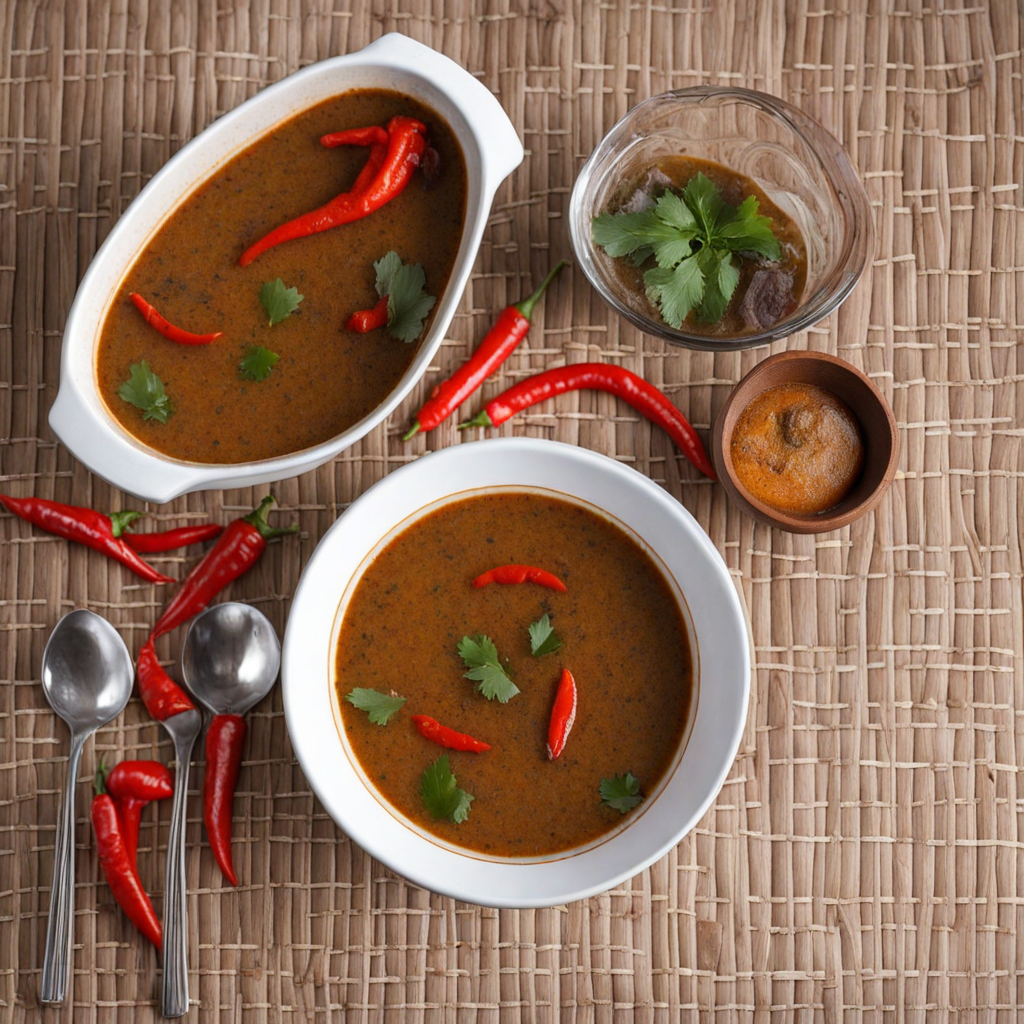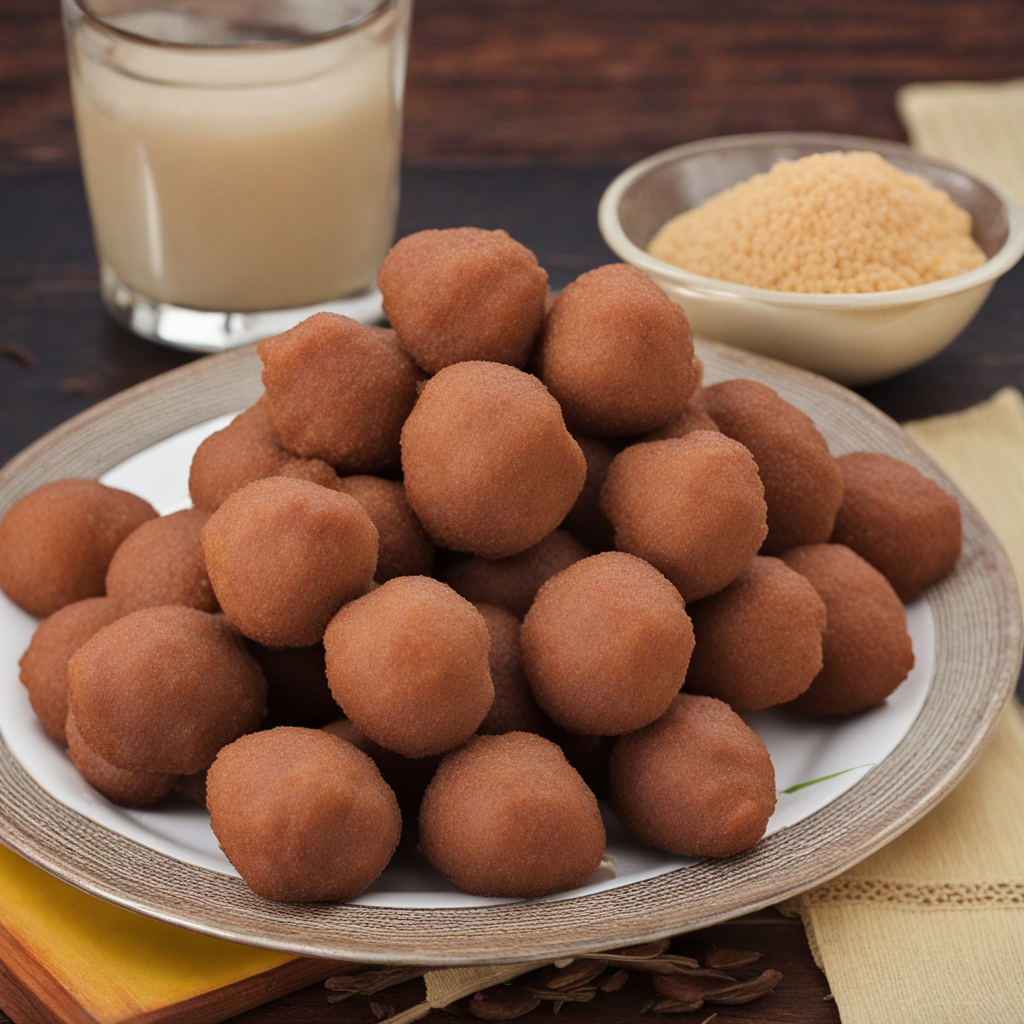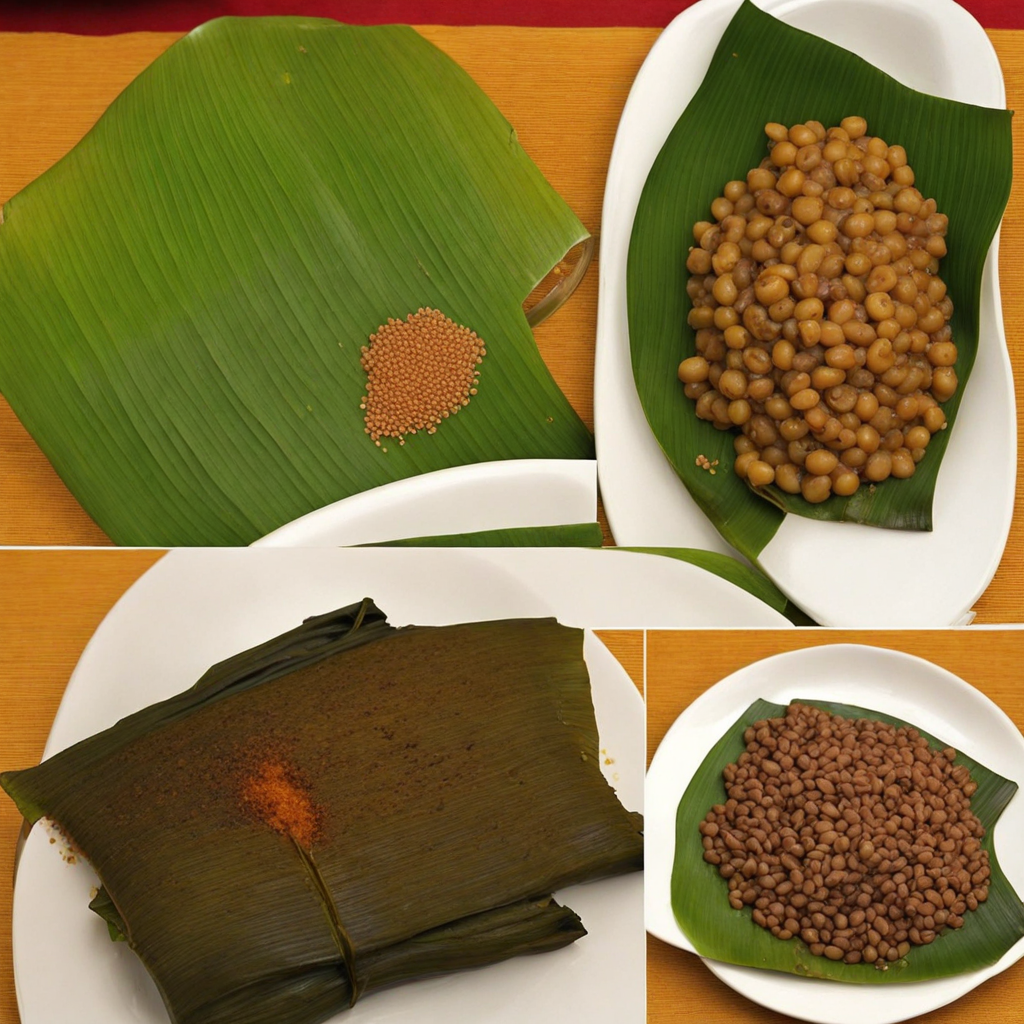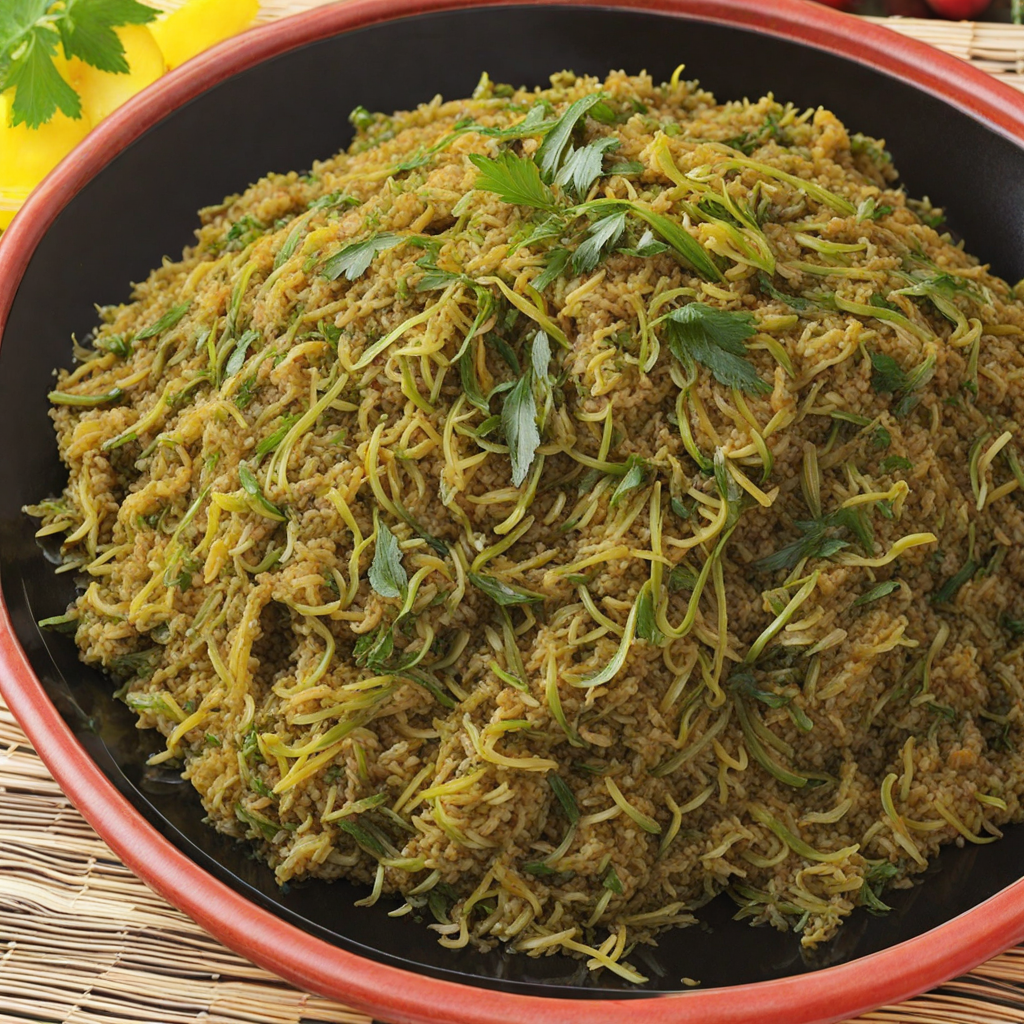Beignets
Beignets, a delightful treat originating from Cameroon, are a popular snack that captures the essence of the country's vibrant culinary culture. These deep-fried pastries are typically made from a simple dough of flour, sugar, yeast, and a hint of salt, which is then left to rise until it doubles in size. The result is a light, airy texture that contrasts beautifully with the crispy exterior, creating an enticing bite that beckons you for more. The dough can be flavored with various spices or infused with ingredients like vanilla or nutmeg, giving each beignet a unique twist that reflects the local palate. Once cooked, beignets are often dusted with powdered sugar, adding a touch of sweetness that complements their savory undertones. They are traditionally enjoyed as a breakfast item or a snack throughout the day, often paired with a hot beverage, such as coffee or tea. In some regions, you may find beignets filled with a variety of fillings, such as beans or sweetened coconut, which further enhances their appeal and offers a delightful surprise with each bite. The combination of flavors and textures makes beignets a versatile dish that can satisfy both sweet and savory cravings. In addition to their delicious taste, beignets serve as a symbol of camaraderie and social gatherings in Cameroon. They are often shared among friends and family during celebrations or casual get-togethers, fostering a sense of community and connection. The preparation of beignets can also be an interactive experience, with family members coming together to roll, shape, and fry the dough, creating not only a delicious snack but also cherished memories. Discovering beignets is not just about the food itself but also about immersing oneself in the warmth and hospitality of Cameroonian culture.
How It Became This Dish
The Sweet Journey of Beignets in Cameroon: A Culinary Heritage Beignets are delicious, deep-fried pastries often associated with indulgence and celebration. While the term "beignet" can refer to various fried treats worldwide, in Cameroon, it holds a special cultural significance and a rich history that intertwines with the nation’s diverse culinary tapestry. #### Origins of Beignets The origins of beignets can be traced back to various cultures, but in Cameroon, they are deeply rooted in the nation's multifaceted history. The French colonial influence in Cameroon, which began in the late 19th century, introduced many culinary practices from France. Beignets, derived from the French word meaning “to dip,” were adapted by Cameroonians and began to evolve into a unique local delicacy. The French beignet is typically made with a light pastry dough, often sprinkled with powdered sugar, and served as a dessert or snack. However, Cameroonian beignets have their own distinct characteristics, influenced by local ingredients and culinary traditions. The usage of cassava, plantains, and cornmeal in place of traditional wheat flour is prevalent, reflecting the agricultural bounty of Cameroon. These local ingredients not only add flavor but also highlight the resourcefulness of Cameroonian cooks who embraced and adapted foreign recipes to fit their available resources. #### Cultural Significance In Cameroon, beignets are more than just a snack; they symbolize togetherness, festivity, and the sharing of joy. They are often prepared for special occasions, family gatherings, and community celebrations. Street vendors, known as "boulangeries," can be found in busy markets and urban centers, frying beignets in large, bubbling pots of oil. The sight and smell of beignets frying draw in passersby, creating a communal atmosphere filled with laughter and chatter. Beignets are often enjoyed with spicy sauces or coupled with a steaming cup of coffee or tea, especially during breakfast or as an afternoon snack. They serve as comfort food for many, evoking fond memories of childhood and family traditions. The act of preparing beignets can also be a social event as families come together to mix batter, fry pastries, and enjoy the fruits of their labor. #### Development Over Time As Cameroon has evolved, so too has the preparation and consumption of beignets. Traditionally, beignets were made from a simple mixture of flour, sugar, water, and yeast. However, the modern interpretation includes a variety of flavors and fillings. Today's beignets may be stuffed with ingredients such as chocolate, fruit preserves, or even savory fillings like spiced meats. This evolution showcases the adaptability of the dish and the willingness of Cameroonians to innovate while respecting their culinary roots. In urban areas, the rise of food stalls and market vendors has popularized beignets, making them accessible to a broader audience. This commercialization has sparked a new wave of creativity among chefs and home cooks alike. Social media, especially platforms like Instagram and Facebook, has also played a pivotal role in showcasing the beauty and diversity of Cameroonian beignets, inspiring food enthusiasts to explore traditional recipes and modern twists. The impact of globalization has led to a blending of culinary traditions, and beignets in Cameroon are no exception. The introduction of international ingredients, techniques, and flavors has led to an exciting fusion of tastes. For instance, you might find beignets infused with spices like ginger or coconut, reflecting a blend of local and global influences. #### Regional Variations Cameroon is a nation of over 250 ethnic groups, each with its own food customs and traditions. This diversity is reflected in the regional variations of beignets. In the coastal regions, one might find beignets accompanied by fresh seafood or infused with local spices, while in the northern regions, they may be served alongside traditional stews or spicy sauces. In the western highlands, where agriculture is prominent, the use of local crops such as maize and beans in beignet recipes is common. This practice not only showcases the variety of ingredients available but also emphasizes the importance of local agriculture in shaping culinary practices. #### A Symbol of Resilience The history of beignets in Cameroon is also a reflection of the nation’s resilience. Throughout periods of colonialism, civil unrest, and economic challenges, food has remained a vital part of Cameroonian identity. Beignets, with their ability to bring people together and create a sense of community, serve as a symbol of hope and continuity. During the struggles for independence in the mid-20th century, food became a means of asserting cultural identity. Beignets, like other traditional dishes, played a role in preserving cultural heritage amid changing times. Festivals celebrating local cuisine and food heritage have become increasingly popular in Cameroon, allowing communities to honor their culinary history and pass down recipes to future generations. #### Conclusion The journey of beignets in Cameroon is a testament to the power of food as a cultural connector. From their French origins to their adaptation and evolution in Cameroonian kitchens, beignets embody a rich history filled with communal ties, regional diversity, and resilience. As they continue to evolve, beignets remain a beloved staple, a delicious reminder of the shared experiences that define Cameroonian culture. Whether enjoyed at a bustling market stall or made at home during family gatherings, beignets are more than just food—they are a celebration of Cameroonian identity, creativity, and the unyielding spirit of its people.
You may like
Discover local flavors from Cameroon







